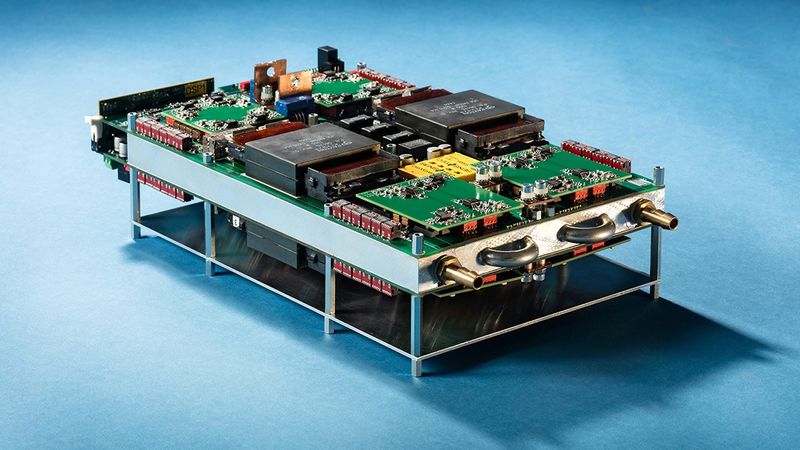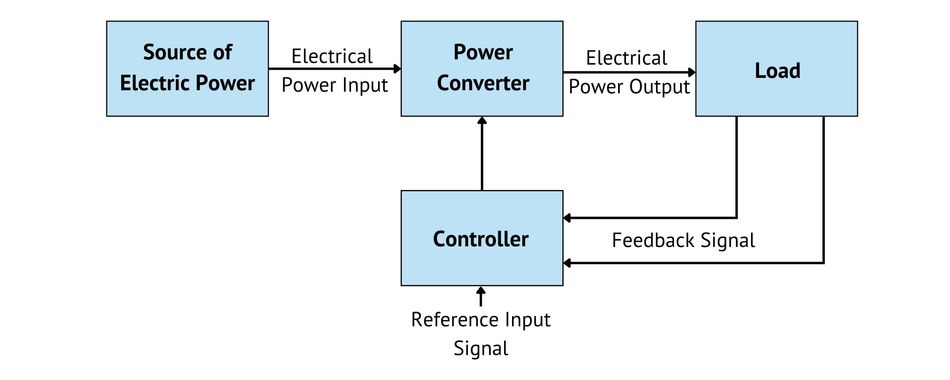Power Management for Tomorrows Innovations
Introducing the Power Management for Tomorrow’s Innovations Series: A new series featuring articles, case studies, and application guides explaining how product designers can build efficient power supplies for various applications.

Image credit: Fraunhofer ISE
This is the introductory article of the 8-part series featuring articles on Power Management for Tomorrow’s Innovations. The series focuses on power management and optimization techniques for modern electronic systems. This series is sponsored by Mouser Electronics. Through the sponsorship, Mouser Electronics shares its passion for technologies that enable smarter and connected applications.
A Focus on Power Management
Everything needs power to work or run, whether connected to a power source or powered wirelessly. Engineers are constantly seeking more efficient and less power-consuming ways to design products, a field of research and design known as power management.
The new series, Power Management for Tomorrow’s Innovations showcases technologies that help build highly efficient power supplies. The series features products by Analog Devices and demonstrates ways for engineers to build power management solutions for different applications.
In this first article, we introduce our readers to the basics of power electronics and the technology behind power conversions in different electrical/electronic devices. We look at the advantages, classification, applications, and developments in power electronic converters.
Introduction to Power Electronics
Power Electronics is a branch of electrical engineering that deals with the control and conversion of electrical power. It is the circuitry that sits between the source of energy and the load consuming it. Power Electronic converters make use of solid-state switches to change the voltage, current, and frequency of electricity so that the energy can be converted into a form suitable for consumption by the load. Fig. 1 shows a simplified block diagram of a typical power electronic converter.

During the operation, electrical and mechanical feedback is collected from the load with the help of sensors and signal conditioners. Based on the feedback, the controller adjusts the operation of the power converter.
The primary advantages of using power converters are:
High efficiency: Power electronic converters contain no moving parts due to which their efficiency is high.
Small size: Advancements in the power handling capacity of semiconductors have enabled even tiny switches to handle large power.
Quick response: Solid-state devices can be rapidly switched on and off to control the power as required by the application.
There are some limitations of the technology too:
Harmonics: Fast switching of electronic components degrades the voltage-current waveform. As the waveform is distorted, a number of issues (such as heating and vibrations) start showing up in the system. With careful design and operation of converters, this can be mitigated.
Costs: The cost of building power electronic converters is high. But in the long run, the converters end up saving a lot more.
The advantages of using power electronic converters outweigh the limitations making clear why most modern electronic devices come with power electronic converters.
Based on the type of power conversion carried out, power electronic converters are classified as:
AC-DC converters: Often called rectifiers, these converters are used to convert power from an AC source to DC.
DC-DC converters: These converters operate from a DC input voltage and are used to either increase the voltage levels, decrease the voltage levels or perform both operations. The converters that increase the voltage levels at the output are called boost converters, the ones that reduce the voltage levels are called buck converters, and the ones that do both are called buck-boost converters. DC-DC converters are also called choppers.
DC-AC converters: The function of these converters is to draw power from a DC power source and supply AC power with varying voltage, current, and frequency. DC-AC conversion circuits are also called inverters.
AC-AC converters: These converters are used to change the voltage, current, or frequency of an AC source. Also known as cycloconverters, these circuits are not used frequently.
Here is a video explaining the concept of widely used DC-DC converters:
70% of the world's electricity is processed by power electronics in some form or other.[1] The applications of power electronics span almost all domestic, commercial and industrial spaces. Here are a few selected ones:
Electric Vehicles (EVs): EVs make extensive use of power electronics in their powertrain. Power electronics applications can be found wherever energy is being converted into electric vehicles.
Chargers: Rectifiers along with choppers are very commonly used in laptop/smartphone chargers.
Renewable energy: Since the energy generated by solar cells, windmills, and many other renewable energy sources is never at a constant rate, it needs to be converted (and sometimes stored) into a suitable form before use. Different power electronic converters and switches are used for this purpose.
High Voltage Direct Current (HVDC) transmission: In power systems, HVDC transmission is a method of transmitting electricity in the form of DC current. The converter circuits present at the feeder and the receiver are built with power electronics.
Developments in Power Electronics
Power electronics is among the hottest topics of research in electrical engineering. There is a continuous effort for improving the performance and efficiency of power electronic converters. Here are some key fronts where the research is currently focused on:
Wide-bandgap (WBG) devices: Materials such as SiliconCarbide (SiC) and GalliumAresnide (GaAs) are known to have a bandgap of over 2 electronVolt (eV) as opposed to 0.6-1.5 eV for conventional semiconductors. This unique property unlocks possibilities of using them for handing a huge amount of power.
Connectivity, digital control, and modulation techniques: Improvements in communication and processing capabilities result in more intelligent and connected control schemes that ultimately improve the performance and efficiency of power electronic converters.
Electric mobility: EVs are considered the future of transport. Battery management systems, the charging infrastructure, motor control unit, and other integral parts of the EV powertrain are all applications of power electronics.
We'll discuss some of these applications and power electronic modules throughout the series.
Power Management Solutions by Analog Devices for Tomorrow’s Innovations
Analog Devices’ high-performance power management solutions meet stringent power requirements with leading-edge design and packaging technologies, including high power densities, ultra-low noise, and superior reliability. These features ensure systems operate at their optimal efficiency, speed, and power levels while increasing feature density and reducing the cost of ownership.
Supported by a start-to-finish power design tool suite and highly configurable power interconnect solutions, Analog Devices’ low complexity power management solutions help customers accelerate time-to-market while delivering best-in-class performance.
Learn about what is happening in the domain of power management and power electronics as this series takes you through some articles, case studies, and application guides focused on building better power solutions for different applications.
Check out the Analog Devices manufacturer page on Mouser Electronics.
Conclusion
Power management is a critical aspect of product design. With advanced power electronic devices and application circuits, engineers can build products that offer superior performance and have long battery life.
This is an introductory article to Power Management for Tomorrow’s Innovations, a series based on an e-book by Analog Devices and Mouser Electronics. It has been substantially edited by the Wevolver team and Electrical Engineer Ravi Y Rao. It's the first article from the Power Management for Tomorrow’s Innovations Series. Future articles will introduce readers to some power management and optimization techniques for modern electronic systems.
The introductory article covered the fundamentals of power electronics, the technology behind highly-efficient power conversion in different electrical/electronic systems.
The first article shares some design techniques for efficient power management in EVs. It covers how manufacturers can build significantly better vehicular electric power systems with systematic planning and innovative power electronic solutions.
The second article introduced readers to silent switching and how it prevents EMI at the source, rather than adding shields and filters to the product later.
The third article describes current measurement techniques using LTC297x series components by Analog Devices. It presents some application circuits and compares different approaches for current sensing in power electronic converters.
The fourth article discussed the problems associated with phase noise and experimentally showcased how power supply designs can be optimized to deal with them.
The fifth article featured Single-Inductor Multiple-Output architecture that integrates different power supply functionalities to drastically reduce the overall size and costs for wearables.
The sixth article describes how vehicular asset-tracking devices are powered with small, efficient power solutions and protected from electrical stresses.
The seventh article explains how designers can implement and validate proven power supply circuits for enabling the reliable operation of healthcare devices.
The final article dealt with a specific IoT power management solution for small, and portable gadgets. It showcases a nano-Power boost converter that ‘operates on fumes’ to make the most out of all the available energy.
About the sponsor: Mouser Electronics
Mouser Electronics is a worldwide leading authorized distributor of semiconductors and electronic components for over 1,100 manufacturer brands. They specialize in the rapid introduction of new products and technologies for design engineers and buyers. Their extensive product offering includes semiconductors, interconnects, passives, and electromechanical components.
References
[1] Power electronics: revolutionizing the world’s future energy systems, Hitachi Energy, [Online], Available from: https://www.hitachienergy.com/news/perspectives/2021/08/power-electronics-revolutionizing-the-world-s-future-energy-systems
About Mouser Electronics
Mouser Electronics is a worldwide leading authorized distributor of semiconductors and electronic components for over 1200 industry-leading manufacturers. We specialize in the rapid introduction of...
202 Posts


